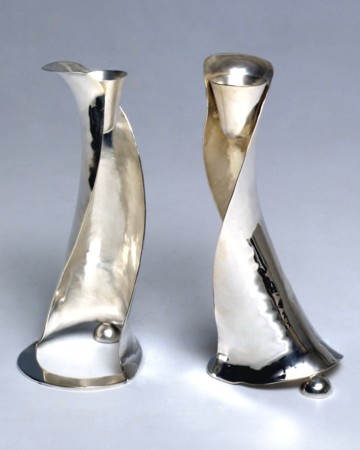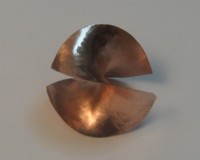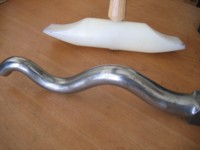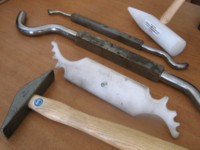anti-clastic raising

Anti-clastic raising is a technique whereby sheet metal is shaped so that two dominant axes curve in opposite directions, yielding a saddle shape. It is done by hammering the metal on a sinusoidal (snake-shaped) stake, compressing the center of the sheet and stretching its edges. This forces two sides to curl under and two sides to curve upward, resulting in the classic anticlastic form, shown to the right.
It is done by hammering the metal on a sinusoidal (snake-shaped) stake, compressing the center of the sheet and stretching its edges. This forces two sides to curl under and two sides to curve upward, resulting in the classic anticlastic form, shown to the right.
Below are pictures of the tools used in this technique, ranging from the large metal stake and hammer on the left, used for massive objects, to the smaller plastic stakes and metal hammers, used for smaller objects such as jewelry.
